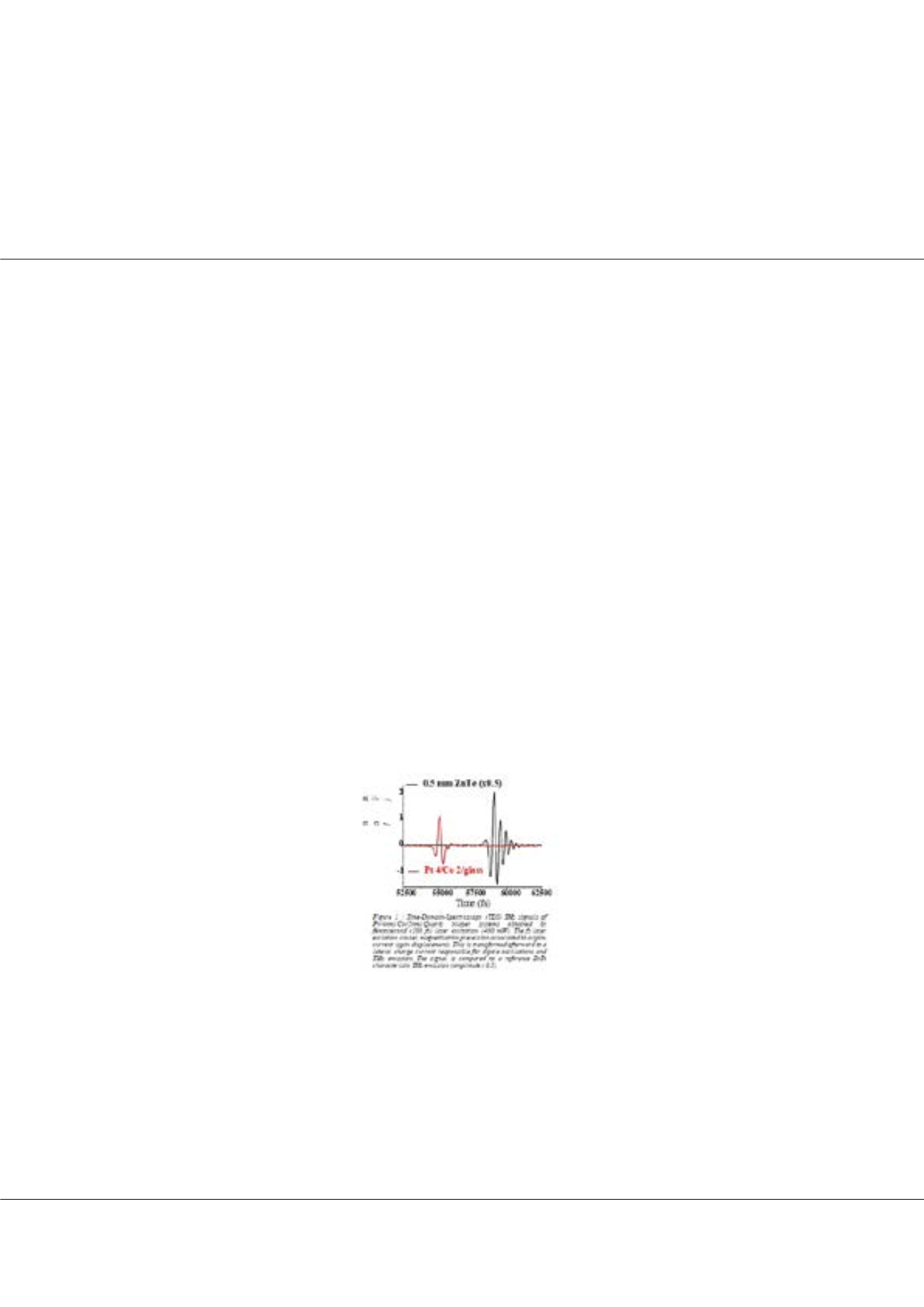

Page 34
conferenceseries
.com
November 13-15, 2017 | Las Vegas, USA
14
th
International Conference and Exhibition on
Materials Science and Engineering
RRJOMS | Volume 5 | Issue 7 | November, 2017
Spinorbitronics at interfaces for THz emission
H. Jaffrès
1
, T.-H. Dang
1
, H. Nond
2
, Q. Barbedienne
1
, S. Collin
1
, N. Reyren
1
, Nicolas
1
, J.-M. George
1
, L. Vila
3
, J. Tignon
2
, L. Divay
4
, P. Bortolotti
4
, S. Dhillon
2
1
Unité Mixte de Physique CNRS-Thales, France
2
Université Paris Diderot-Sorbonne Paris Cité, France
3
Spintec, Institut Nanosciences et Cryogenie, France
4
Thales Research & Technology, France
S
pin-Hall Effects at short lengthscale in bulk heavy metals like Pt or W and spin-orbit related phenomena like Inverse-Edelstein
Effect at interfaces are presently at the basis of new spintronics functionalities. Combined with RF-spin-pumping Ferromagnetic
Resonance (FMR) pumping, spin-orbit give rise to AC and DC spin-to-charge current conversion. Those combined techniques
enable to probe the interface quality and physical properties. In the same way, in an extented description out-of FMR resonance, it
was recently reported that THz emission of relatively high power may be realized in the same kind of heterostructures composed
of ferromagnetic (FM) and non-FM metal films via dynamical spin-to charge conversion and time-dependent spectroscopy (TDS).
In that mind, we will present our last results of THz emission provided by optimized growth bilayers composed of a high-spin orbit
material in contact with a ferromagnetic layerCo/Pt, NiFe/Au:W). Those bilayers state-to-the art model systems in experiments
combining RF-spin pumping and spin-to-charge conversion by ISHE. Here, experiments consist in exciting magnetization and
spin-currents within the FM layer via femtosecond laser excitation and measuring, in the picosecond timescale, the relaxation of
the correlated spin and charge currents responsible for THz dipolar emission. The THz emission provided by these spintronics
bilayers reaches the power of ZnTe semiconductor technology. We will display the first THz emission results obatined on -Sn/InSb
topological insulators. Moreover, in order to study the SHE spin-current profiles and address their properties in those [Co,Ni]N/
Pt and [Co,Ni]N/Au:W multilayers, we have analyzed their Anomalous Hall effect (AHE) signals showing up a characteristic AHE
spin-inversion from Pt to Au:W samples. We analyze our results in the series of samples: the exact conductivity profile across the
multilayers via the 'extended' Camley-Barnas approach and the spin current profile generated by spin-Hall effect. We will discuss the
role of the generalized spin-mixing conductance on the spin-transport properties and spin-orbit torques.
Biography
Dr. Henri Jaffrès completed his Ph.D. at the Physics Department of the Institut National des Sciences Appliquées (INSA) - University Toulouse III, France, in 1999. Then
he joined the Unité Mixte de Physique CNRS-Thales, Palaiseau, France as a postdoc (2000–2001) before joining the CNRS at the same institute. His work focuses on
spintronics, spin injection, spin transport, and spin transfer in semiconductor spintronics devices with electrical and optical detection in III-V heterostructures, as well as
spin-Hall effect and spin-pumping in group IV semiconductors.
henri.jaffres@cnrs-thales.frH. Jaffrès et al., Res. Rev. J Mat. Sci. 2017, 5:7
DOI: 10.4172/2321-6212-C1-011
















